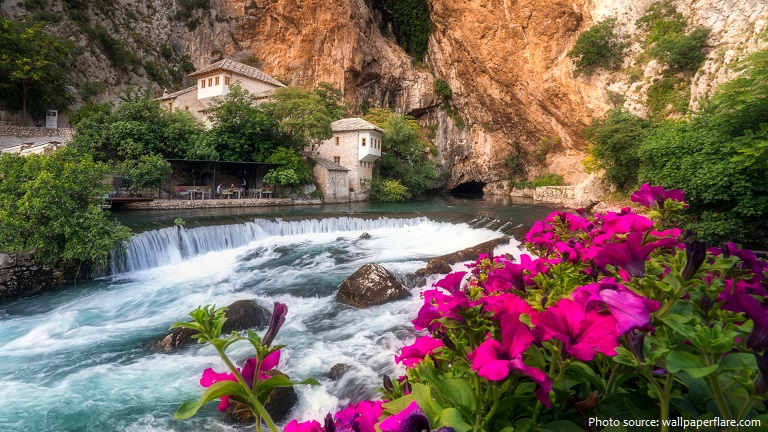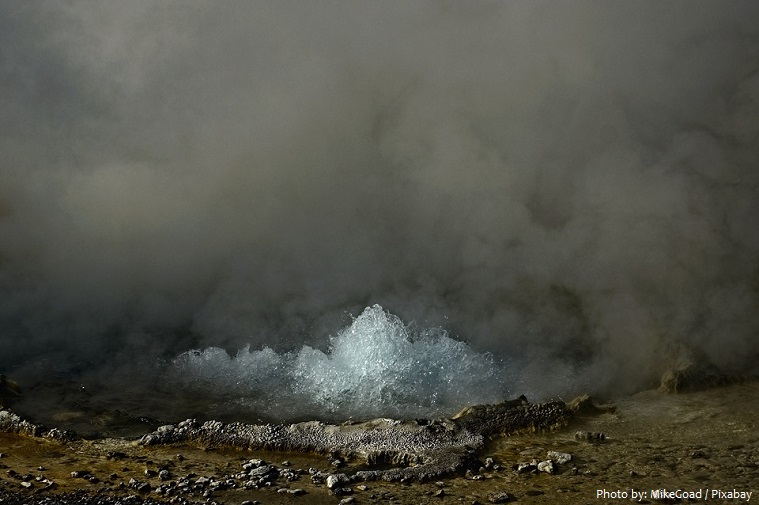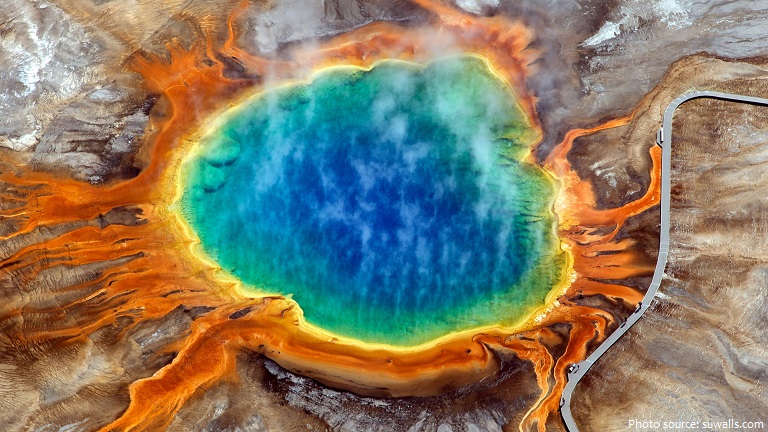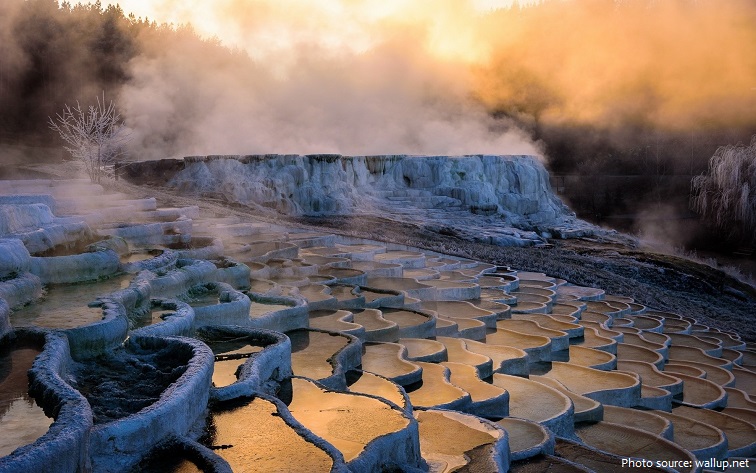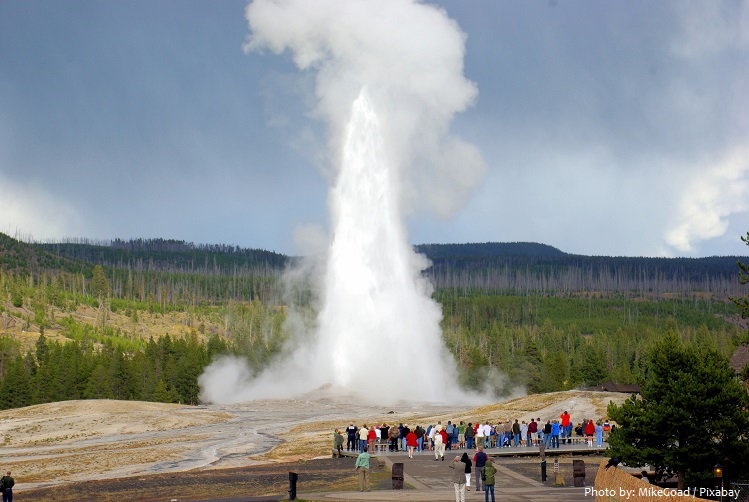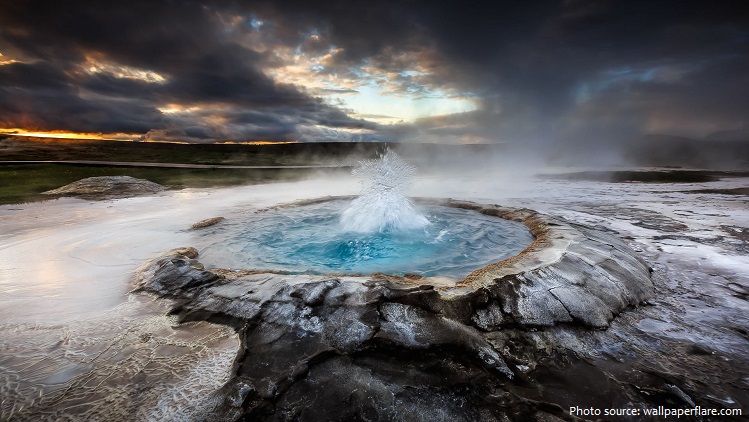A spring is an opening at or near the surface of the Earth for the discharge of water from underground sources.
The word “spring” comes from the German word “springer”, which means “to leap from the ground”.
A Spring may flow the whole year or only sometimes. This depends on the water getting into the ground all of the time (rain) or only once in a while (snow melting).
Flow from a spring can range from barely detectable (in which case the spring is usually called a seep) to more than 30 cubic meters per second, which is about 30,000 liters (7,900 gallons) each second. Temperatures of spring water range from near water’s freezing point to its boiling point.
Water from springs is usually clear. However some springs may be colored by the minerals that are dissolved in the water.
A hot spring is a spring produced by the emergence of geothermally heated groundwater that rises from the Earth’s crust. While some of these springs contain water that is a safe temperature for bathing, others are so hot that immersion can result in an injury or death.
The Grand Prismatic Spring is a hot spring in Yellowstone National Park. It is located in the Midway Geyser Basin. The Grand Prismatic Spring is approximately 110 meters (370 feet) in diameter and is 50 meters (160 feet) deep. It is is the largest hot spring in the United States, and the third largest in the world. The Grand Prismatic Spring’s vivid colors are caused by the combination of the mineral-rich water, the pigmented bacteria found in the lake and its temperature.
Deriving from springs in a cliff almost 200 meters (656 feet) high overlooking the plain, calcite-laden waters have created at Pamukkale (Cotton Palace) an unreal landscape, made up of mineral forests, petrified waterfalls and a series of terraced basins. It is inscribed on the UNESCO World Heritage List in 1988.
A geyser is a spring characterized by intermittent discharge of water ejected turbulently and accompanied by steam. As a fairly rare phenomenon, the formation of geysers is due to particular hydrogeological conditions that exist only in a few places on Earth. Generally all geyser field sites are located near active volcanic areas, and the geyser effect is due to the proximity of magma. Generally, surface water works its way down to an average depth of around 2,000 metres (6,600 ft) where it contacts hot rocks. The resultant boiling of the pressurized water results in the geyser effect of hot water and steam spraying out of the geyser’s surface vent (a hydrothermal explosion).
Springs that contain significant amounts of minerals are sometimes called ‘mineral springs’. More bottled waters claim springs as their origin than any other type of source. Spring waters vary widely in their mineral composition and TDS level, both of which are influenced by the geology of the local area.
The many uses of spring water around the world span history.
Hippocrates and ancient Greek physicians were versed in the health benefits of mineral water therapy.
In early recorded history, the Egyptians and Arabians discussed the use of mineral waters for healing the ill.
Mythology and legend date the thermal springs of Bath, England, to 800 BC.
Hannibal refreshed himself with bubbling spring water at Vergeze on his way to attack Rome in 218 BC.
Therapeutic application of mineral waters was very popular in the late 1800s and early 1900s.
Significant expenditures were made throughout Europe and the United States to develop lavish resorts and vacation spots at new famous spas near mineral springs.
Springs have been used for a variety of human needs including drinking water, domestic water supply, irrigation, mills, navigation, and electricity generation.

